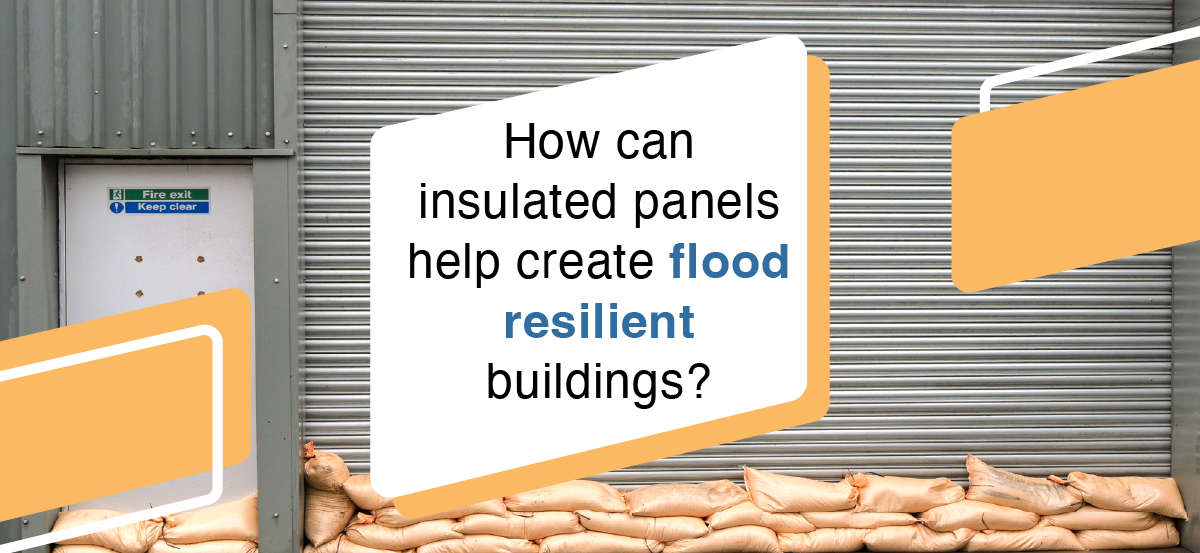As recent news stories from Europe demonstrate all too well, storm surges and unprecedented high rainfalls are having a devastating impact on communities and business all around the world. In the UK too, we are experiencing increasing volatile weather conditions which are causing floods to happen on land previously unaffected. In addition to posing a risk to life, flooding can cause significant property damage, which is not only costly to repair but, in the case of businesses, can result in a loss of footfall and therefore income until buildings are back up and running. In October 2024, it was reported that footfall levels for retailers dropped by 3% due to flooding with many warehouses, leisure centres, and retail parks affected. So, how can we design more flood-resilient constructions or adapt existing commercial buildings in the UK?
Assessing the need for flood resilience
Flooding could mean significant financial and reputational loss due to property, equipment, and inventory damage. A business may also need to allow time to manage risk to employees and address any repairs which could result in no longer being able to provide the levels of service expected to customers, supply product, or have to close for a considerable amount of time. With increasing economic pressures, prolonged closure and expensive repairs could result in it struggling to recover.
The insurance company, Aviva, released data in June 2024 that warned of the increase in floods, with one in five properties being at risk. It also noted that there has been a trend towards significantly higher claims outside of the “traditional flood season”. Between 2013-June 2024, it received an average of 2.9% flood claims on commercial properties on the lowest months and 17.3% on the highest, demonstrating the importance of building flood resilience into the structures of our buildings rather just than taking seasonal measures.
A piece by the University of Cambridge on Dr Edward Barsley’s book ‘Retrofitting for Flood Resilience: A Guide to Building & Community Design,’ also emphasises the urgency with which we need to upgrade our building stock to deal with the increasing flooding risk, explaining that this isn’t in place of trying to tackle the climate crisis but in reaction to the reality of the situation.
As Barsley states:
“there’s enough momentum already locked in to the climate system that flooding will be getting worse in many places for the foreseeable future. We need to prepare for that and adapt. And if we can reduce the exposure and vulnerability of existing and new buildings to flooding, we won’t be using vast amounts of energy and materials to gut the buildings, dry them and reinstate them.”
You can learn more about preparing a flood risk assessment (FRA) and standing advice via the Environment Agency on the UK Government website or explore Flood Maps and Preliminary Flood Risk Assessments for NI (PFRA) via the Department for Infrastructure Northern Ireland Government page.
How can we design for flood resilience?
Even relatively low levels of excess water could still result in damage to properties and can have a negative impact in the long-term. Whether this damage is due to ground flooding or structural issues that have allowed water to penetrate the building envelope, these are concerns that need to be factored in when designing a new build or planning a refurbishment of an existing property.
To help architects, engineers, developers, and other building professionals in improving flood resilience in buildings, the BSI created BS 85500:2015 Flood resistant and resilient construction. Guide to improving the flood performance of buildings. It applies to new builds as well as retrofitting existing buildings but is for guidance and recommendation only, not statutory compliance. The guidance covers masonry, light-weight steel-frame and timber-frame buildings and while there are some commercial building references it is primarily aimed towards domestic/residential construction. Regardless, the general guidance has broad applicability and is relevant to all buildings in flood risk zones.
How can insulated panels help?
BS 85500 notes that water lowers the insulation properties of some insulation materials, with a particular reference to open cell and mineral wool. It states that timber and steel framed walls containing construction materials that have poor performance in floods, for example oriented strand board and mineral wool insulation, should not be used. However, closed cell insulation technologies have a construction that can aid resistance and recovery in flood risk zones as they don’t absorb water. As a result, it is much easier to maintain structural stability and improve recoverability. It states:
“Cavity insulation should preferably incorporate rigid closed-cell materials as these retain integrity and resist moisture take-up. Other common types, such as mineral wool batts, are not generally recommended as they can remain wet for several months after exposure to flood water, which slows down the wall drying process and compromises the insulation properties of the wall.”
EPIC member insulated panels have a PIR-core which has a closed-cell construction. This insulation layer is sandwiched between durable, steel facings. Whilst moisture being trapped within cavities between construction layers is a risk on all building types, particularly during persistent heavy rainfall and strong winds in frequent storms, insulated panels can support faster drying and recovery due to their design. In addition, their high thermal performance and airtight joints help to maintain insulation properties once the cavity has dried out.
Flood resilience can also take the form of flood repairable materials, where flood damage is designed to be simply removed and replaced rather than dried out. If any structural insulated panels are damaged due to debris, they are relatively simple to remove and replace as they are factory-engineered into a single unit.
Whether specified for a new build or refurb project, insulated panels can support building within tighter deadlines, allowing businesses and services to get up and running sooner. Learn more about how insulated panels can help with creating a faster, simpler build programme.

